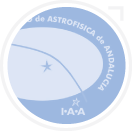Removal of atmospheric features in near infrared spectra by means of principal component analysis and target transformation on Mars: I. Method
The aim of this work is to extract the surface contribution in the Martian visible/near-infrared spectra removing the atmospheric components by means of Principal Component Analysis (PCA) and target transformation (TT). The developed technique is suitable for separating spectral components in a data set large enough to enable an effective usage of statistical methods, in support to the more common approaches to remove the gaseous component. In this context, a key role is played by the estimation, from the spectral population, of the covariance matrix that describes the statistical correlation of the signal among different points in the spectrum. As a general rule, the covariance matrix becomes more and more meaningful increasing the size of initial population, justifying therefore the importance of sizable datasets. Data collected by imaging spectrometers, such as the OMEGA (Observatoire pour la Minéralogie, l'Eau, les Glaces et l'Activité) instrument on board the ESA mission Mars Express (MEx), are particularly suitable for this purpose since it includes in the same session of observation a large number of spectra with different content of aerosols, gases and mineralogy. The methodology presented in this work has been first validated using a simulated dataset of spectra to evaluate its accuracy. Then, it has been applied to the analysis of OMEGA sessions over Nili Fossae and Mawrth Vallis regions, which have been already widely studied because of the presence of hydrated minerals. These minerals are key components of the surface to investigate the presence of liquid water flowing on the Martian surface in the Noachian period. Moreover, since a correction for the atmospheric aerosols (dust) component is also applied to these observations, the present work is able to completely remove the atmospheric contribution from the analysed spectra. Once the surface reflectance, free from atmospheric contributions, has been obtained, the Modified Gaussian Model (MGM) has been applied to spectra showing the hydrated phase. Silicates and iron-bearing hydrated minerals have been identified by means of the electronic transitions of Fe2+ between 0.8 and 1.2 μm, while at longer wavelengths the hydrated mineralogy is identified by overtones of the OH group. Surface reflectance spectra, as derived through the method discussed in this paper, clearly show a lower level of the atmospheric residuals in the 1.9 hydration band, thus resulting in a better match with the MGM deconvolution parameters found for the laboratory spectra of Martian hydrated mineral analogues and allowing a deeper investigation of this spectral range.































